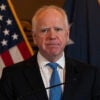Peggy Noonan recently wrote a Wall Street Journal op-ed column in response to Jonathan Haidt’s new book: “The Anxious Generation: How the Great Rewiring of Childhood Is Causing an Epidemic of Mental Illness.”
The book overflows with data supporting Haidt’s conclusion that social media harms children’s and adolescents’ mental health. Noonan reflected on the phenomenon surrounding the release of his book. Everyone knows social media harms kids, but when a person with authority—a psychologist and scholar, in this case—conveys the message, for good or for ill, “it hits like a thunderclap.”
Now, on Monday, another thunderclap erupted when Surgeon General Dr. Vivek Murthy published an op-ed column in The New York Times calling for a surgeon general’s warning label on social media platforms. Such a proposal certainly does not come out of the blue. In May of last year, the surgeon general issued an advisory about the effects social media use has on youth mental health.
Social media platforms use recommendation-based algorithms and push notifications to continue serving users with content and keep them engaging on the platforms. Children are particularly vulnerable to these design features.
The American Psychological Association attests that young kids are physiologically less able to resist temptations to remain online and that adolescents experience neurological changes that promote cravings for social attention, feedback, and status.
Mandating warning labels on products requires a change in manufacturing and product-labeling design. In the case for online platforms, the change is relatively easy, but of course, that doesn’t mean they won’t put up a fight. They will highlight the positive connection social media can create, but they won’t admit the obvious.
A warning label could deter users and diminish profit.
Murthy called on Congress to pass legislation mandating a warning label. Like any executive, the surgeon general is limited in his regulatory power. Congress should take a cue from anti-smoking advocates and require illustrations with stark verbal warnings. Including images on a label cautioning against the effects of platforms that are inherently focused on imagery and video-based content is a no-brainer, and platforms are not constrained in space.
Think about the types of conversations a warning label could inspire. Young kids may ask their parents: What’s anxiety or depression? Why does social media cause that? Is social media bad? Why is that child sad and crying?
How many parents will pause a bit longer before allowing their child to have social media when they know their child will come across such a label? Perhaps it will be easier for parents to team up and collectively decide to hold off letting their kids have social media until a certain age, so no kid is left out, another suggestion Murthy offered in his op-ed.
It’s well-established that social media can be addictive and can have a negative effect on mental health, but given that 95% of kids between the ages of 13 and 17 use social media, kids and parents either do not fully understand the seriousness of the issue or are in denial of their own susceptibility.
A warning label could hit home.
Looking beyond hypothetical outcomes, evidence shows that warning labels work. Murthy noted in an interview on NBC’s “Today” show that in 1965 (the year Congress mandated warning labels for cigarettes), more than 40% of Americans smoked. Today, it’s less than 12%.
As Murthy acknowledged, warning labels will not in and of themselves make social media safer. In an ideal world, the mere threat of a label would compel the companies to self-correct. However, as evidenced by the companies’ lack of action after members of Congress have introduced numerous bills aimed at making social media safer for kids and there have been several hearings—some of which featured social media CEOs testifying—the threat is not enough.
In addition to a warning label, we need other policy changes, such as parental consent and age verification, limits on data collection, and restrictions on who can contact minors.
The surgeon general has advised. Now, it’s Congress’ turn to act.
































